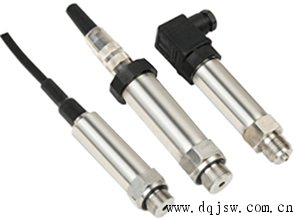Proper installation is crucial for the longevity and accuracy of high-temperature melt pressure sensors. One common issue is improper positioning, especially when the sensor is forced into small or irregularly shaped holes. This can cause damage to the diaphragm due to impact. It's important to use the correct tools to prepare the mounting hole, ensuring it meets the required dimensions. Additionally, applying the right amount of torque during installation helps create a secure seal, but excessive force may lead to the sensor slipping out. To prevent this, a release compound is often applied to the threaded part before installation.

Another key factor is checking the size of the mounting hole. If it's not properly sized, the threads of the sensor can wear down over time, affecting both the sealing performance and the sensor’s functionality. This could even pose a safety risk. Using a mounting hole gauge ensures the correct size is maintained, following industry standards such as 1/2-20UNF2B. Keeping the mounting hole clean is also essential to avoid clogging from melted material. Before cleaning the extruder, all high-temperature melt pressure sensors should be removed to prevent damage. If residue remains, it can harden and potentially damage the sensor when reinstalled. Cleaning kits are available, but repeated cleaning might cause wear on the sensor itself. In such cases, adjusting the sensor’s position within the mounting hole can help reduce further damage.
Choosing the right installation location is equally important. If the sensor is placed too close to the upstream side, unmelted material may erode its top. On the other hand, if it's installed too far downstream, a stagnant zone may form between the sensor and the screw, leading to material degradation and distorted pressure readings. Also, if the sensor is inserted too deeply into the barrel, the rotating screw may come into contact with it, causing damage. Careful cleaning is necessary before any maintenance. Using wire brushes or special compounds can harm the sensor’s diaphragm, so these methods should be avoided. When cleaning, the sensor should be removed and wiped with a soft cloth. The hole itself should be cleaned using a clean drill and guide sleeve to ensure no debris remains.
Moisture is another concern. Although many sensors are designed to withstand harsh environments, they are not typically waterproof. Leaks from cooling systems can damage the sensor. If exposure to water is unavoidable, a waterproof-rated sensor should be used. Additionally, during extrusion, it’s important to allow sufficient “soaking time†for the raw materials to fully melt. If the extruder isn’t at the proper operating temperature before starting, both the sensor and the machine can suffer damage. Removing the sensor from a cold extruder can also lead to material sticking to the diaphragm, causing damage. Always ensure the barrel is sufficiently heated and the material inside is softened before removing the sensor.
Finally, avoiding pressure overload is essential. While some sensors have an overload capacity of up to 50% beyond their maximum range, it’s best to stay within the safe operating range. Ideally, the measured pressure should be around half of the sensor’s full scale. This provides a safety margin, reducing the risk of damage even under extreme conditions.
Silicone Wire,Power Cord,High Temperature Line,Rubber Wire
JIANGSU PENGSHEN HIGH TEMPERATURE WIRE CABLE CO., LTD. , https://www.pengshencable.com
